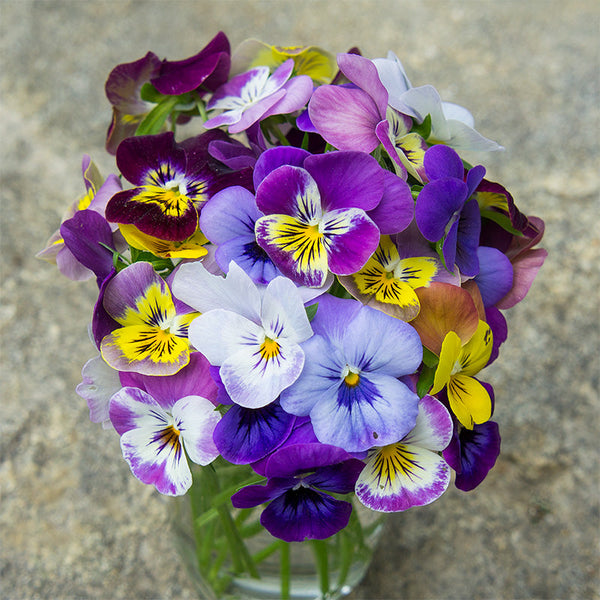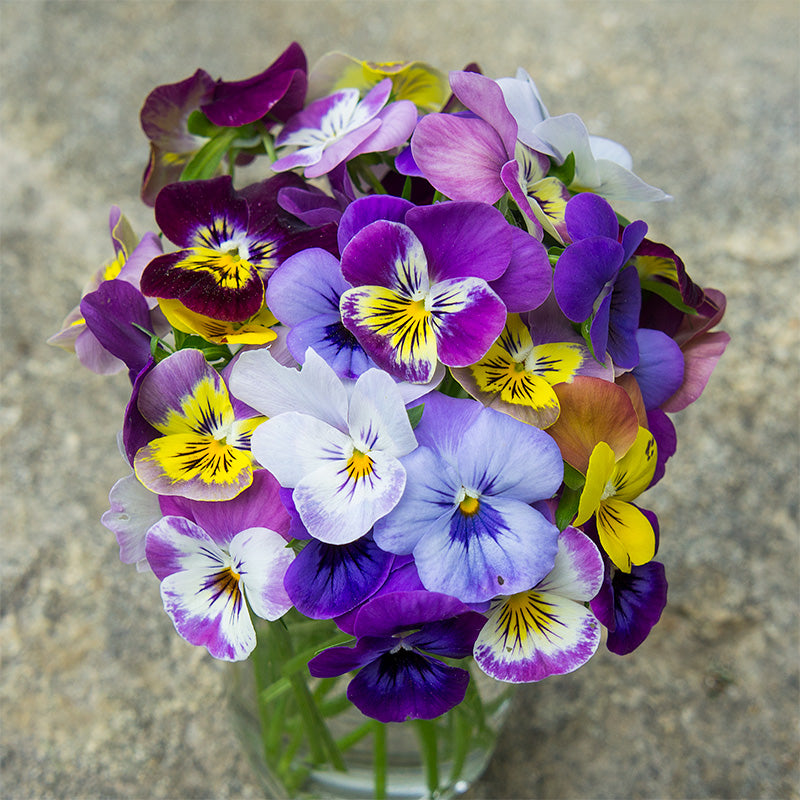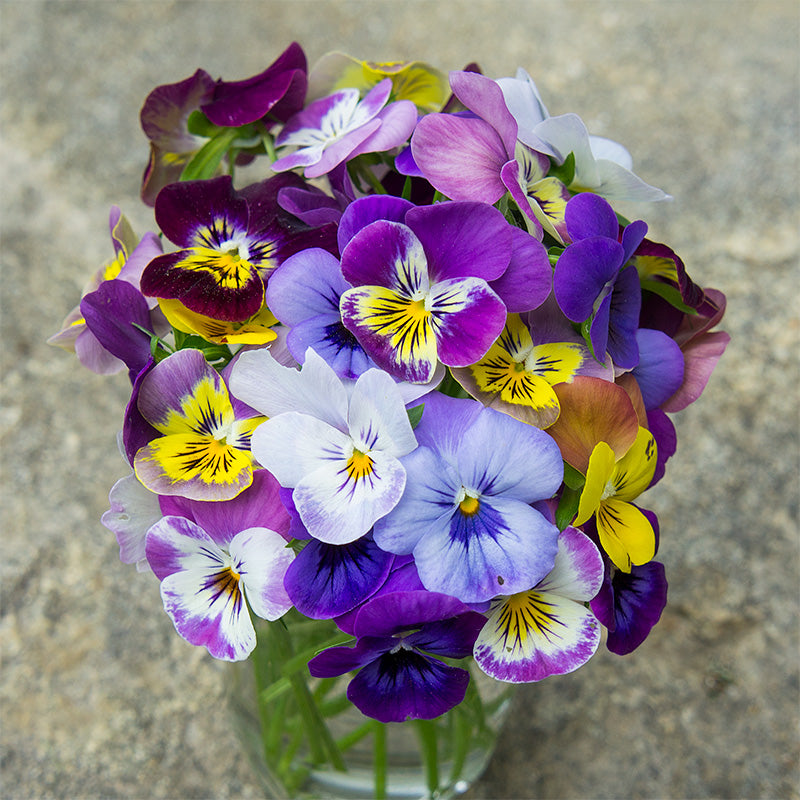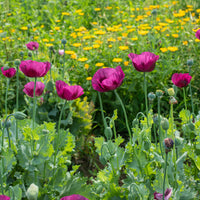SOWING INSTRUCTIONS
Depth:
1/8" seeds require darkness to germinate.
Sprout Time:
7-21 days after chill
Seed To Bloom:
14-16 weeks
Starting Indoors:
Sow indoors in late winter and keep at 35-40°F for 1-2 weeks, then 65-75°F. Cover with humidity dome and exclude light until germination occurs.
Starting Outdoors:
Direct sow in early spring, late summer in warm winter zones 8+ where they are grown as annuals.
WHEN TO SET OUTSIDE
In spring, when light frost is still possible, 3 weeks before the last frost date
PLACEMENT & CULTIVATION
A small delight, violas bloom during the first balmy days of spring, just when gardeners are getting down to planting. Many have expressive faces and whiskers of dark tracery across the velvet petals in almost every imaginable color and shade. They look great in containers, planted about the vegetable garden for their edible petals, or at the garden's edge, where many self-sow for a yearly spring treat. They dislike hot summer weather—during this time trim back and they will rebloom in fall.
Watering Details:
Keep fairly moist with about 1" of water per week, more during especially dry spells. Do not overwater.
Fertilizer:
Mix in a couple of inches of compost prior to planting. Feed once per month with an organic, water-soluble seaweed or kelp fertilizer, or mix in a granular type after planting. and again in late summer, when fall-blooming buds form.
Diseases & Pests:
Leaf spots and slugs are possible problems. Treat foliage with an organic fungicide and scatter pelletized iron phosphate at the base of the plants to combat slugs.
When to Cut for Bouquets:
Harvest when flowers are nearly open.

































